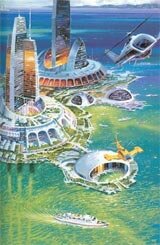OZ | January 30th, 2008 | Architecture, Nautical and TV |  | Bookmark
| Bookmark
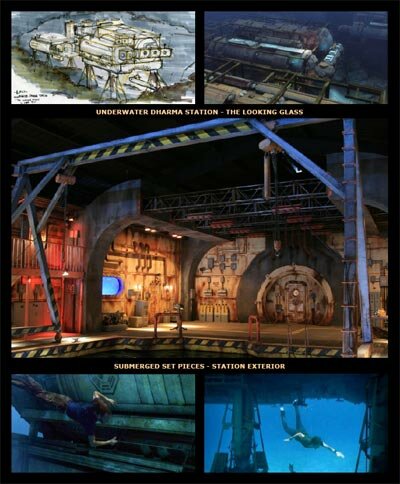
Tonight ABC will re-air (9pm EST) an annotated version of Lost’s season 3 two hour finale, Through the Looking Glass, in anticipation of tomorrow’s season premiere.
Worse than Devil’s Island in French Guiana, the imprisoning island of Lost also serves as a key character. Filmed predominantly outdoors in Hawaii, the art department has still had the opportunity to conceive significant set pieces. All beginning with the wrecked Oceanic Airlines aircraft scattered across the beach. An expense that resulted in a pilot budget of $12 million, the most expensive in ABC history and rivaling the massive cost of the HBO/BBC series Rome.
Season two introduced elaborate interior sets as the we discovered what was behind the hatch. One section of the underground complex even featured a Buckminster-esque geodesic dome.
Continue reading ‘Through Lost’s Looking Glass’
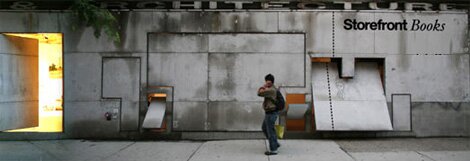
Storefront for Art and Architecture in New York has followed their announcement of the White House Redux competition, with the launch of a curated micro-bookshop this past Wednesday. A fascinating concept, “…its shelves will comprise a careful selection of books recommended by artists, architects, writers, filmmakers and other key figures who have helped shape Storefront’s unique identity over the past 25 years.
If the external facade of the gallery and store has piqued your curiosity, Archidose details the concept designed by starchitect Steven Holl and artist Vito Acconci on a mere $45,000 budget.
Continue reading ‘Storefront Books’
OZ | January 25th, 2008 | Books and Products |  | Bookmark
| Bookmark
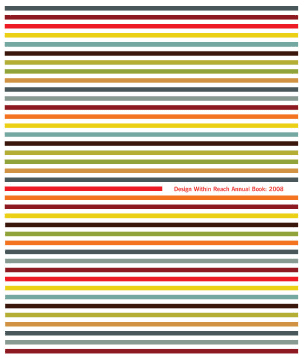
Earlier this month, the modern classics furniture shop Design within Reach released their Annual Book for 2008. It’s even more compact than last year’s edition, measuring a little over 6″ x 7″. A useful and practical reference book, the sharp layout and sizeable product photos are supplemented by the occasional spread offering a behind the scenes look into the furniture production process. 228 pages conclude with a thorough index.
While other furniture stores (Ligne Roset, B&B Italia) release impressive catalogs, this compact volume genuinely passes as a book rather than a traditional catalog and is printed on recycled paper certified by the Forest Stewardship Council (FSC) and the Sustainable Forestry Initiative (SFI).
Limited copies remain available at some DWR Studios or contact DWR online.
OZ | January 24th, 2008 | Architecture, Film and TV |  | Bookmark
| Bookmark
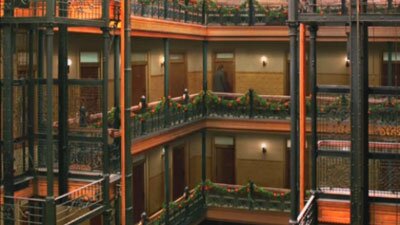 Pushing Dasies | Episode: Corpsicle
Pushing Dasies | Episode: Corpsicle
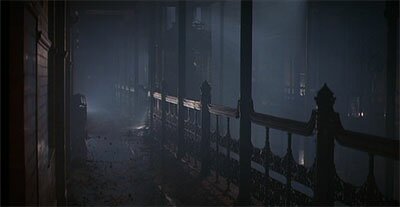 Blade Runner
Blade Runner
“But when Ridley decided to use the Bradbury, I was against it,” Fancher continues. “He’d come back from seeing the place with the location manager (Michael Neale) and was all excited. I told him, ‘Ridley, you can’t use the Bradbury Building. I know you’re from England and you think it’s a great place, and it
is a great place, but it’s already been done. Overdone. I’ve seen it already in a ton of movies. And even though I never watch TV, I’ve been told that the Bradbury’s been used for cop shows every week for the past ten years.’
“Now, I was trying to make the point that Ridley was from out of the country and didn’t realize that everyone already knew this building. But then Ridley looked at me and said, ‘Not the way I’ll do it.’ At the time I thought that was incredibly arrogant. But then I went to see Blade Runner and thought, ‘My God! Ridley was Right! No one’s ever seen the Bradbury like this before!” - FUTURE NOIR: The Making of Blade Runner by Paul M. Sammon.
OZ | January 18th, 2008 | Exhibitions |  | Bookmark
| Bookmark
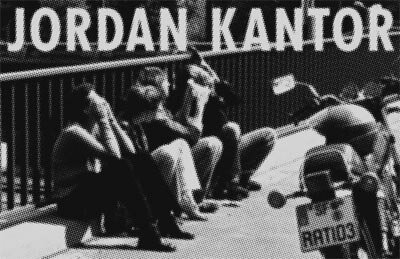
Now an Associate Professor of Painting at the California College for the Arts, Jordan Kantor was a colleague at KDLAB during its early years and I’ve since become a greater admirer of his work (see appended). If you’re in San Francisco, his latest solo exhibition opens tonight at Ratio 3.
Continue reading ‘Jordan Kantor Exhibition’
OZ | January 18th, 2008 | Architecture and Events |  | Bookmark
| Bookmark
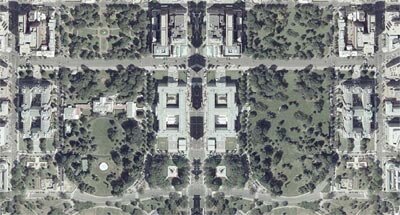
Two hundred and sixteen years ago this July, the emerging United States held an architectural competition for the President’s House, won by James Hoban. The extent to which the White House has evolved and expanded while retaining its original facade is particularly unique in the annals of architecture and engineering.
“What if the White House, the ultimate architectural symbol of political power, were to be designed today?”
Continue reading ‘White House Redux: Call for Ideas’
OZ | January 15th, 2008 | Film |  | Bookmark
| Bookmark
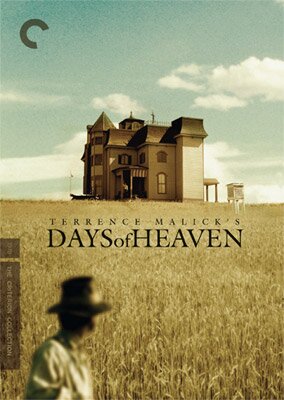
Bisecting the horizon amidst expansive vistas of wheat resides a lone Victorian style mansion. It reminds me of Andrew Wyeth’s painting, Christina’s World, though its inspiration is culled from Edward Hopper’s House by the Railroad. It’s one of many stunning sights in the poetic Terrence Malick (The Thin Red Line, The New World, Badlands) film, Days of Heaven.
Set in 1916, “a Chicago steelworker accidentally kills his supervisor and flees to the Texas panhandle with his girlfriend and little sister to work harvesting wheat in the fields of a wealthy farmer.” Filmed in Alberta, Canada, primarily during magic hour, Days of Heaven lives up to its billing as one of the most beautiful motion pictures ever captured on celluloid. Originally unveiled in 1978, The Criterion Collection released a restored director-approved special edition last October and on December 27th, the Library of Congress inducted Days of Heaven into the 2007 National Film Registry. The Registry selects “25 “culturally, historically or aesthetically” significant films for induction each year.”
Continue reading ‘Days of Heaven’
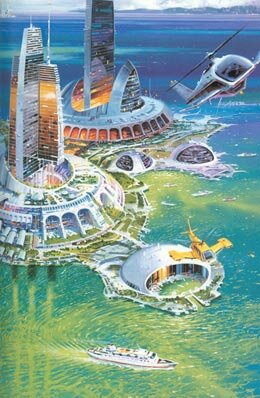
The notion of cities condensed into a singular structure or hyperstructure, has frequented works of fiction as far back as 1899 with H.G. Wells, When the Sleeper Wakes. The concept garnered wider attention seventy years later when Architect Paolo Soleri published, Arcology: The City in the Image of Man. Massive self sustaining habitats, the pliable infrastructure and small ecological footprint of arcologies avoid the damaging, inefficient urban sprawl of today’s cities and suburbia.
Despite increasing stresses on our existing societal structure and a world population rapidly growing to unsustainable levels, land based arcologies appear unlikely in the foreseeable future. The answer may reside with the remaining seventy percent of the Earth’s surface, our oceans. Ocean arcologies could utilize ocean thermal energy conversion (OTEC) or derive energy from the ocean’s perpetual motion to provide abundant pollution-free energy. Fresh water would be available via desalination. Despite the inherent dangers and high expense, the surface of Earth’s oceans are already littered with surprising structures from Sea Forts in the Thames Estuary to the famed remnants of Florida’s Stiltsville and of course the ubiquitous oil rig. Following, a compilation of ambitious ocean arcology concepts.
Continue reading ‘Ocean Arcologies’
OZ | January 9th, 2008 | Books, Exhibitions and Film |  | Bookmark
| Bookmark
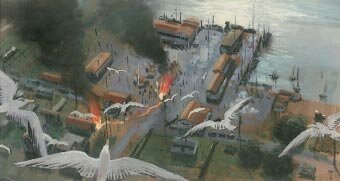
Commencing January 18th, the Academy of Motion Picture Arts and Sciences will be hosting the free exhibition, Casting a Shadow: Creating the Alfred Hitchcock Film. Appended are several production design illustrations and storyboards that will be on display and are amongst the sixty plus plates featured in an accompanying book.
The book, now available in stores after the exhibition debuted at Northwestern University’s Mary and Leigh Block Museum of Art, features extraordinary production design art for Foreign Correspondent, Spellbound, Shadow of a Doubt, The Birds and Saboteur. Also included, studies for the Mt. Rushmore House in North by Northwest, two pages of costume design and storyboards for Vertigo, The Birds, Topaz and Family Plot. The incredible Family Plot storyboards by Thomas Wright are especially noteworthy for their non uniform panel distribution that successfully captures the dynamism of the filmed sequences.
Continue reading ‘Casting a Shadow’
OZ | January 1st, 2008 | Architecture and Film |  | Bookmark
| Bookmark
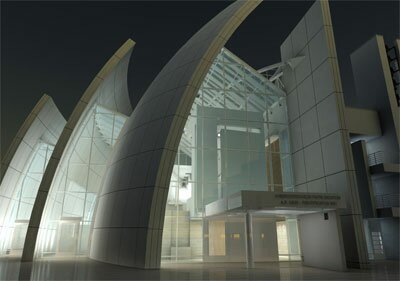
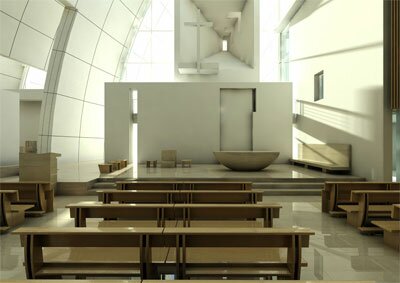
It’s among the finest examples of modernist and post-modernist churches in the world, joining such landmarks as Ando’s Church of the Light, Moneo’s Cathedral of Our Lady of the Angels and Johnson’s Crystal Cathedral. The Jubilee Church is one of Starchitect Richard Meier’s greatest hits and a personal favorite.
As part of his thesis at Sapienza Università Di Roma, Roberto De Angelis highlights the Jubilee Church via extensive 3D animation. Captured from every conceivable angle with beautiful timelapses and dynamic breakaway animation, suitably complemented by Ennio Morricone’s stunning soundtrack to The Mission, Roberto’s ambitious effort allows the viewer to experience the Church in a new light.
In his Pritzker acceptance speech Meier stated, “My goal is presence, not illusion”. Through the art of illusion we’re afforded a new appreciation of the Jubilee Church’s presence.
Continue reading ‘Jubilee Church Visualized’





















